Leadership
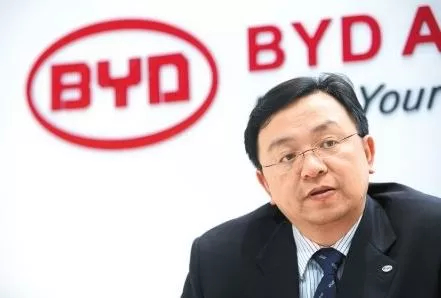
Effective BYD leadership is one of the main factors behind the phenomenal growth of the electric automaker. In April 2022, Wang Chuanfu, founder, Chairman and President of BYD, was listed on The 50 Most Influential Business Leaders in China 2022 by Fortune. Described as “a mix of Thomas Edison and Jack Welch, the former General Electric chief” by Charlie Munger in 2008[1], Wang Chuanfu is a charismatic and passionate leader known for his long-term vision and relentless work ethic. Transformational leadership principles prevail at BYD. Wang Chuanfu’s audacious vision for a sustainable future through EV and renewable energy motivates employees and stakeholders alike. He articulates a clear picture of BYD’s potential impact on the world, transcending mere financial goals. This inspires employees to see their work as contributing to a larger purpose. It is important to note that maintaining a transformational leadership style as the company scales can be challenging. Effective communication and delegation become crucial to keep everyone aligned with the vision and empowered to act. BYD Company Limited Report contains the above analysis of BYD leadership. The report illustrates the application of the major analytical strategic frameworks in business studies such as SWOT, PESTEL, Porter’s Five Forces, Value Chain analysis, Ansoff Matrix and McKinsey 7S Model on BYD. Moreover, the report contains analyses of BYD business strategy, organizational structure and organizational culture. The report also comprises discussions of BYD marketing strategy, ecosystem and addresses issues of corporate social responsibility. [1] White, E. & Campbell, P. (2024) “Wang Chuanfu, the driving force behind BYD’s rise” Financial Times, Available at: https://www.ft.com/content/22527628-733e-4188-9678-ab3210fdb1ba
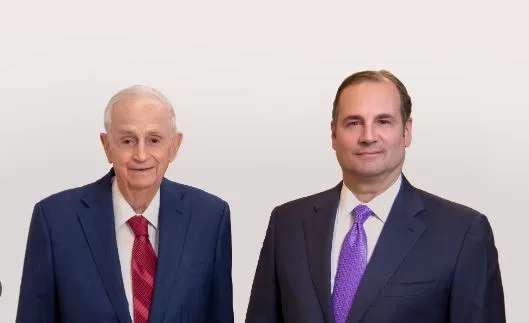
The current CEO of Marriott International is Anthony Capuano. He has been with the company for over 25 years and has held a variety of leadership positions, including Chief Development Officer and President of Global Development. Capuano is known for his strategic thinking and his ability to build and lead high-performing teams. Marriott International‘s leadership team is also notable for its diversity. The company’s executive team includes women, people of colour, and representatives from all over the world. This diversity of experience and perspectives helps Marriott International to better understand its customers and to develop innovative products and services. In terms of leadership style, Marriott is known for its commitment to servant leadership. Servant leaders focus on serving their employees and customers, rather than the other way around. This approach has helped Marriott International to create a positive work culture and to build strong customer relationships. Marriott International has a leadership development program called Voyage. Voyage is a 12-18 month program that is available to recent university graduates and provides a combination of practical hands-on experience and leadership training. Participants in the Voyage program rotate through different departments within a Marriott hotel and receive training from experienced leaders. Upon successful completion of the program, participants are well-positioned for leadership roles within hotel chain. Furthermore, Marriott leadership practices integrate the following important elements: Focus on employee development. The largest hotel chain in the world invests heavily in employee development and training. The company believes that its employees are its most valuable asset, and it is committed to helping them succeed. Fostering the culture of innovation. Marriott encourages its employees to be innovative and to come up with new ideas. The company has a number of programs in place to support innovation, such as its “TakeCare” program, which allows employees to submit ideas for improving the company.…

Co-founder Reed Hastings had the helm of Netflix leadership as the CEO for a quarter century until he stepped down early in 2023. Hastings practiced unconventional and effective leadership practices such as providing context instead of directions, offering straightforward feedback and paying people more than they expect. Under Reed Hastings, leadership at Netfix largely boiled down to hiring and retaining top talent and remaining innovative largely because of the company’s commitment to hiring high performers, giving them lots of transparency and freedom, and avoiding imposing rules that might get in their way. Currently, there are two Co-Chief Executive Officers – Ted Sarandos and Greg Peters. Sarandos had led Netflix’s Hollywood business for many years and Peters has managed advertising business of the the streaming service. The rationale behind having two CEOs relates to benefiting from the shared expertise of the two executives. There are cases such as Oracle, Salesforce and Atlassian where companies thrived under joint CEOs. At the same time, having two CEOs managing a company can involve certain challenges such as blurring the line of responsibility, lack of speed of decision making and high potential of ego issues and others. These are valid reasons why majority of companies have lone leaders. Moreover, many business analysts and practitioners argue that joint CEOs are only temporary measure mostly suitable only for start-ups. However, to the credit of Netflix, co-founder and former CEO Reed Hastings has not left the company and he is serving as executive chairman. In case if major disagreements occur between Sarandos and Peters regarding strategic issues Hastings can always jump in with the final voice regarding the issue. An interesting aspect of leadership at Netflix refers to the depth of information provided to board members and the level of engagement of the board members with…
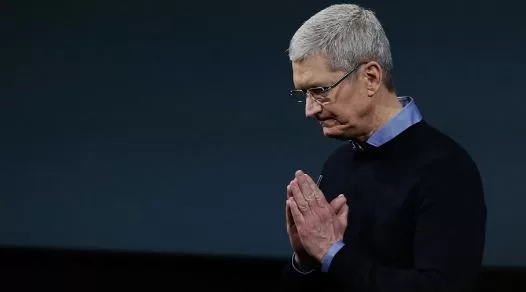
During Steve Jobs era that covers the period 1997 – 2011, Apple leadership was autocratic with Steve Jobs micro-managing a wide range of business operations. It has been noted that “when Steve Jobs was in charge, everything flowed through him.”[1] Apple leadership practices have changed dramatically under Tim Cook. Acknowledged as the World’s Greatest Leader by Fortune Magazine[2], Tim Cook proved to be effective from various perspectives. Moreover, Tim Cook has been praised by employees for inspirational leadership and helping his subordinates to become a better human being.[3] The multinational technology company is parting with perfectionism and autocracy elements of leadership that had prevailed under Steve Jobs. Apple leadership style integrates the following elements: 1. Democratic leadership style. In contrast to highly autocratic leadership style of Apple co-founder and late CEO Steve Jobs, the current CEO Tim Cook exercises and promotes democratic leadership. For Cook, it is important to build consensus among senior management regarding strategic decisions for the ebusiness. Moreover, since assuming the top role, Cook granted greater autonomy to new product development team, decreasing the direct participation of the CEO in new product development process. 2. “Quiet” leadership. Tim Cook has been praised for his quiet, yet effective leadership style. Nicknamed as “quiet leader” by some industry analysts[4], Cook is totally different from his charismatic predecessor, Steve Jobs. At the same time, Tim Cook is occasionally criticized by analysts and industry watchers for the lack of ambition and vigour, his predecessor Steve Jobs had. For example, according to a report by BGC financial services firm, “under Cook, Apple has been cautious about entering new product categories. The Apple Watch, launched in April 2015, is the No. 1 smartwatch, but overall sales have disappointed. Apple Music, which debuted in June 2015, has grown rapidly to 15 million subscribers, but…

Leadership style at Nvidia is based on the vision and values of its co-founder and long-term CEO Jensen Huang. The leather jacket-clad CEO has been at the helm of Nvidia leadership since 1993. Huang is known for his charismatic leadership style and his ability to inspire and motivate his team. He is deeply involved in the day-to-day operations of the company and is known for his hands-on approach to management. Huang does most of the company-wide presentations and product announcements himself wearing his iconic leather jacket. The CEO is also a strong advocate for innovation and is committed to pushing the boundaries of what is possible with technology. One of Huang’s key strengths as a CEO is his ability to anticipate emerging trends and opportunities in the technology industry. He was an early champion of the potential of graphics processing units (GPUs) for high-performance computing, and he has been instrumental in driving Nvidia’s success in this area. He has also been a vocal advocate for the use of AI in a wide range of applications, from self-driving cars to medical research. Moreover, Huang is known for his ability to build strong partnerships with other companies and to work collaboratively with his team. He has fostered a culture of innovation and excellence at Nvidia, and he is deeply committed to supporting the growth and development of his employees. Celebrating failures is an important element of leadership style at Nvidia. Soon after Huang started the company in 1993, raised the capital and employed 100 people, the technology they developed did not work. Nevertheless, Huang was able to turn around the company by developing new products and the early experience played an important role in cementing corporate culture of intellectual honesty and taking risks. Nvidia Corporation Report contains the above analysis of Nvidia…
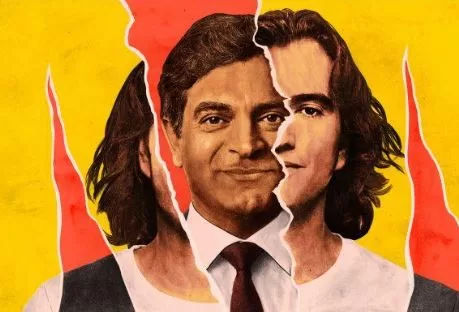
WeWork leadership has been a controversial topic with co-founder and first CEO Adam Neumann being notorious for deceitful leadership style. In fact, leadership style at WeWork under Neumann is used as a case study in business schools worldwide for its inefficiency at various levels. The long list of wrongdoings by Neumann includes engaging in insider dealings, burning cash recklessly without a path to profitability, systematically exercising poor executive judgement and allowing discrimination and harassment at the workplace. Neumann had contemplated and it was written in initial company IPO filings that in case he died his wife Rebekah, the co-founder and the chief brand and impact officer of WeWork, would be responsible for appointing a successor. This scenario reminded some business analysts Game of Thrones show. Neumann also engaged in non-standard financial dealings that caused conflict of interest. For example, he was borrowing money from WeWork at a little or no interest to privately buy properties and then lease them to WeWork. Similarly, Neumann registered “The We Company” as a trademark under his name personally and sold it to WeWork for USD 6 million. Other unacceptable behaviours by Neumann include brining weed on a private jet, organizing notorious parties with free beer on tap and promoting the work culture of discrimination and sexism. These and other WeWork leadership issues emerged when the workspace provider was scrutinized when preparing for IPO in 2019 and the company had to delay the public listing until October 2021. Due to the mounting pressure from investors and other stakeholders following the revelations Adam Neumann had to resign on September 24, 2019. Co-CEOs Artie Minson and Sebastian Gunningham took over leadership at WeWork until Sandeep Mathrani became CEO in February 2020. Sandeep Mathrani has an impressive track record as turnaround master and he has led five different…

Howard Schultz has been at the helm of Starbucks leadership for more than two decades in total. He is rightly credited for making the business the world’s largest coffee retailer with 17133 company-operated stores and 16700 licensed stores in 84 markets employing 254,000 people.[1] On June 2000 Howard Schultz stepped down and assumed a new position as chief global strategist to focus on international expansion in general and expansion in China in particular. New internally promoted CEO Orin Smith oversaw store count to increase to 10000 locations with more than USD 5 billion annual sales. However, at the same time Starbucks market share at US decreased due to increased competition from McDonald’s, Dunkin’ Donuts and other competitors. Schultz returned at the helm of Starbucks leadership as CEO on January 2008 in the middle of global financial crisis to replace Jim Donald, who had succeeded Orin Smith in 2005. After a series of massive changes such as closing many underperforming stores, re-training employee and enforcing fair trade in coffee supply-chain, Schultz stepped down as CEO for the second time and became executive chairman. Kevin Johnson was appointed as a new Starbucks CEO effective from April 2017. Kevin Johnson admitted having ‘venti-sized shoes to fill” referring to successful leadership by Howard Schultz. At the same time, the new CEO stated “I’m not going to fall into the trap of trying to be Howard. I’m going to be authentic to who I am as a person and who I am as a leader”[2]. Howard Schultz returned for his third stint as CEO on April 4, 2022. This time the role was interim CEO until more suitable person is found. The main reason for his latest return was to actively block attempts by baristas to form unions. In September 2022, former CEO of Reckitt Benckiser…

The current IKEA leadership practices and patterns are based on leadership principles and life philosophy of its founder Ingvar Kamprad. Known to practice transformational and charismatic leadership styles, Ingvar Kamprad had been a driving force for many decades behind the phenomenal success of the home improvement and furnishing chain. Ingvar Kamprad founded the furniture retailer in 1943 and after leading the business for 70 years, he handed over control to his three sons. Nevertheless, work principles of the founder associated with frugality and effectiveness continues to serve as a basis for IKEA leadership practices in modern days. In 2017 Jesper Brodin became President and CEO of IKEA Group, INGKA Holding B.V. and its controlled entities. He is only the 6th CEO in The Swedish furniture chain’s history of more than 75 years. Mr. Brodin has worked as an assistant to founder Ingvar Kamprad and it is widely believed that IKEA CEO will not change the strategic direction set by the founder of the business. The CEO of Inter Ikea that manages company’s brand and concept Mr. Jon Abrahamsson Ring has also served as founder’s assistant for many years. It has been noted that “former assistants of Mr. Kamprad have had a near monopoly on the leadership of the two main companies in the furniture empire in recent times”[1]. Apart from two executives mentioned above, former Ingka CEOs Peter Agnefjall and Anders Dahlvig were also former assistant to Mr. Kamprad. IKEA leadership principles are based on the following pillars: 1. Leading by example. It is difficult to contain IKEA leadership style into a single classification due to a unique nature of the business in more than one ways. Perhaps, leading by example, may the most closely characterise leadership practices at IKEA. The famous quote by IKEA founder Ingvar Kamprad…
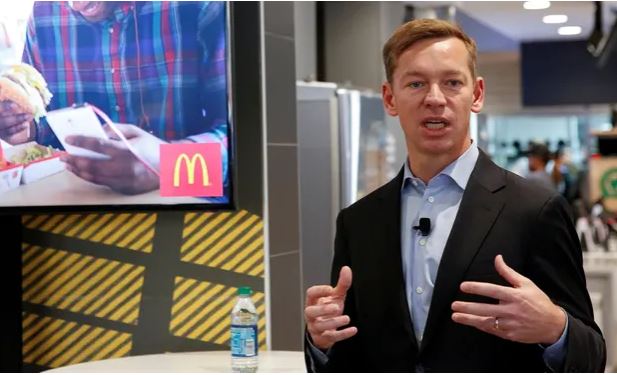
McDonald’s leadership team is headed by the President and CEO, who is aided by nine senior managers, each overseeing a specific aspect of the business. [1] The previous President and CEO Mr. Steve Easterbrook took the helm in 2015 and he was widely considered as an effective leader until he was fired for having consent sexual relationships with subordinate employees. During his leadership tenure Mr. Easterbrook was credited with turning around the company and reviving its falling stock price. Most prominent changes introduced by Easterbrook include reducing costs, introducing touch-screen ordering and establishing all-day breakfast. The new President and CEO Chris Kempczinski has also proved to be effective business leader. Under the new leadership McDonald’s has emerged as a clear winner during the pandemic. Mr. Kempczinski has channelled his energy and focus on digital, drive thru and delivery to adjust the business model to the pandemic environment. McDonald’s leadership is currently faced with a serious challenge. In recent years the fast food chain has faced many lawsuits and claims involving sexual harassment and racial discrimination. The former President and CEO Mr. Easterbrook being found violating company code of conduct is the evidence of severity of the issue. One of the important tasks for the new leader Mr. Kempczinski is to create a corporate culture where sexual harassment and racial discrimination is not tolerated in practice. McDonald’s Corporation Report contains the above analysis of McDonald’s leadership. The report illustrates the application of the major analytical strategic frameworks in business studies such as SWOT, PESTEL, Porter’s Five Forces, Value Chain analysis, Ansoff Matrix and McKinsey 7S Model on McDonald’s. Moreover, the report contains analyses of McDonald’s business strategy, organizational structure and organizational culture. The report also comprises discussions of McDonald’s marketing strategy, ecosystem and addresses issues of corporate social responsibility. [1] Annual Report…

Amazon leadership style has been classified as pragmatist. Pragmatist leaders “set high standards and unapologetically expect those standards to be met by themselves and by their employees”[1] The company’s founder and first CEO, Jeff Bezos is an exceptional and proven business leader. Bezos efficiently exercises visionary and servant leadership styles and places exceptional customer service at the core of Amazon’s business practice. Moreover, Jeff Bezos leadership style is unique in several ways. For example, it has been noted that “while you might find other internet firms focusing on a fun, relaxed atmosphere for their employees, no-frills Bezos is proving the potency of another model: coddling his 164 million customers, not his 56,000 employees.”[2] Jeff Bezos’ leadership style can be analysed through the prism of contingency leadership theory. According to contingency leadership theory, “leader’s effectiveness is contingent upon with how his or her leadership style matches to the situation.”[3] Jeff Bezos leadership style has been characterized as harsh, cutthroat and demanding.[4] It can be argued that such a leadership style fitted the situation on the onset of the business, when the company had to strengthen its position on rapidly expanding industry. In July 2021 Jeff Bezos stepped down as CEO and assumed the role of company’s executive chairman. Andy Jassy CEO of Amazon Web Services became the new CEO of the online retail behemoth. At has been noted that although Andy Jassy values Bezos leadership style the new CEO is “more mild-mannered, soft-spoken and less prone to angry outbursts compared to Bezos”[5] Nevertheless, Mr. Bezos will continue to yield an immense influence on the business and Amazon leadership style for the foreseeable future. This is because his new role executive chairman grants his involvement in strategic decision making and Mr. Bezos remains as the largest shareholder of the e-commerce giant. Amazon…
